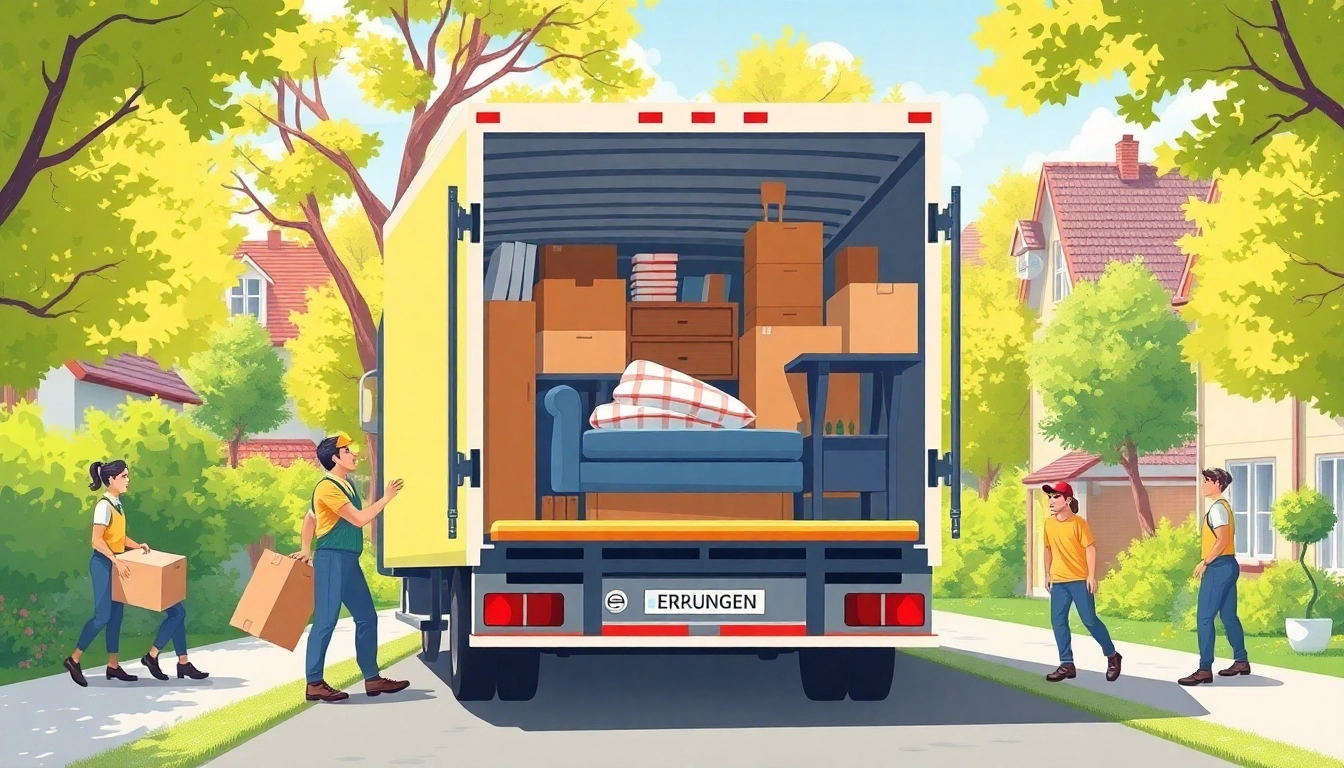Understanding Toronto Moving: A Comprehensive Overview
Moving in Toronto isn’t just about transporting your belongings from one place to another; it involves intricate planning, organization, and often, a lot of stress. As a city known for its vibrant neighborhoods, diverse population, and bustling lifestyle, Toronto presents unique challenges and opportunities for those looking to relocate. Embracing the process with the right information can transform what might seem like a daunting task into a manageable experience. In this extensive guide, we delve into everything you need to know about Toronto moving, from the benefits of professional moving services to key steps for a successful transition.
Why Choose Professional Services for Toronto Moving
Engaging professional moving services in Toronto can significantly ease the transition to a new home or office. Here are some reasons to consider opting for expert help:
- Expertise and Experience: Professional movers possess extensive knowledge regarding logistics, safety procedures, and best practices in the moving industry which can save time and prevent possible errors.
- Efficiency: Well-trained moving teams can perform tasks rapidly and effectively, allowing for a swift transition that might take an amateur much longer to accomplish.
- Safety: Moving can pose risks, especially when handling large or fragile items. Professionals utilize techniques and tools designed to protect both your belongings and the people involved.
- Stress Reduction: By delegating the moving process to experienced movers, you can focus on settling into your new space, mitigating the emotional toll that often accompanies relocation.
Common Challenges Faced During the Moving Process
Understanding the potential hurdles of moving in Toronto can help you better prepare. Common challenges include:
- Navigating Traffic and Parking: Toronto’s busy streets can create logistical issues for larger moving trucks, making it essential to scout routes and parking options beforehand.
- Building Regulations: Many residential and commercial buildings have specific requirements for moving, such as reserving elevators or protecting floors, which can complicate the process.
- Weather Conditions: Toronto’s changing weather can affect moving day. Rain, snow, or extreme heat can pose challenges that might complicate the move.
- Last-Minute Changes: Life is unpredictable, and sometimes, delays or hurried decisions can happen at the last minute, leading to heightened stress.
Key Benefits of Toronto Moving Services
The advantages of employing Toronto moving services extend beyond simple logistics. Key benefits include:
- Comprehensive Services: Most moving companies offer a range of services from packing and loading to transporting and unpacking, ensuring a one-stop solution for all your moving needs.
- Tailored Solutions: Professional movers often provide customizable plans to fit your specific requirements and budget, enhancing flexibility during the moving process.
- Insurance Options: Reputable moving companies offer insurance to protect your belongings, providing peace of mind in case of unforeseen incidents.
- Post-Move Support: Quality moving services may continue their support even after the move, helping you with unpacking or setting up your new space.
Preparing for Your Move: The Essentials
Preparation is crucial for a successful move. Here’s how to get started:
Checklist for Toronto Moving Preparation
A well-structured checklist can make a significant difference. Essential tasks include:
- Anticipate the Timeline: Identify your moving date and work backward to set deadlines for tasks such as packing, notifying services, and setting up your new home.
- Declutter: Sort through belongings to decide what to keep, donate, or discard. Reducing clutter can lighten your load and simplify the moving process.
- Research Moving Companies: Gather quotes and read reviews to select a reputable moving company that aligns with your needs.
- Gather Packing Supplies: Accumulate boxes, bubble wrap, and tape well ahead of time to avoid scrambling on moving day.
- Notify Important Parties: Communicate your upcoming move to schools, banks, utility companies, and any other relevant institutions.
Organizing Your Belongings Effectively
Effective organization simplifies both packing and unpacking. Here are strategies to consider:
- Label Boxes: Clearly labeling boxes by room and contents can save time when unpacking.
- Use a Color-Coding System: Designate colors for each room to make the moving process easier for both movers and yourself.
- Create an Inventory: Documenting all items you are moving can help track your belongings and contribute to insurance claims if necessary.
- Prioritize Essential Items: Pack a “first-night” box with necessities such as toiletries, clothes, and basic kitchen supplies to ease the transition into your new home.
Packing Supplies You’ll Need
Having the right packing supplies can greatly increase the efficiency of your move. Here’s a list of essentials:
- Sturdy boxes of various sizes
- Bubble wrap or packing paper
- Strong packing tape
- Markers for labeling
- Furniture pads and covers
- Plastic bins for organizing smaller items
Executing Your Move: Steps to Follow
The execution stage is where all your preparation pays off. Follow these steps for a successful move:
How to Select the Right Moving Date
Choosing the right date is crucial. Consider the following factors:
- Seasonality: Summer is peak moving season. Opting for off-peak times, like fall or winter, may offer better rates and availability.
- Weekday vs. Weekend: Weekdays are often less busy for movers, potentially leading to better service and lower costs.
- Local Events: Avoid major local events or holidays that could complicate traffic or accessibility.
Creating a Timeline for Toronto Moving
A detailed timeline can guide your moving process effectively. Key date planning includes:
- Two Months Prior: Start decluttering and researching moving companies.
- One Month Prior: Confirm your move date and begin packing non-essential items.
- One Week Prior: Finalize arrangements with your chosen moving service and pack essential items last.
- Moving Day: Ensure all packing is complete and have a plan for the transition to the new home.
Coordinating with Moving Professionals
Effective communication with your moving team is key. Here’s how to achieve a smooth operation:
- Provide Clear Instructions: Ensure that the movers understand what goes where in your new home.
- Keep Contact Information Handy: Maintain open lines of communication throughout the process in case of delays or questions.
- Be Accessible: Be available on moving day to address any issues that may arise at either location.
Settling Into Your New Home: Post-Move Considerations
Once the move is complete, the real work begins: making your new house feel like home. Here are tips for settling in:
Unpacking Tips for a Smoother Transition
A well-planned unpacking strategy can make your new place feel welcoming faster. Consider these tips:
- Start with the Essentials: Unpack essential items first to make your living space functional immediately.
- Transform One Room at a Time: Focus on completing one room before moving onto the next to prevent becoming overwhelmed.
- Utilize Furniture Placement: Use unpacking as an opportunity to optimize the layout of your new home, which can enhance comfort and functionality.
Updating Your Address: What to Remember
Updating your address is vital to avoid service interruptions. Be sure to notify the following:
- Post office
- Banks and financial institutions
- Utilities and service providers
- Insurance companies
- Friends and family
Getting Familiar with Your New Neighborhood
Take time to explore and acclimate to your new surroundings. Strategies include:
- Walk Around: Spend time walking through your neighborhood to discover nearby parks, shops, and amenities.
- Meet Neighbors: Building connections in your community can enhance your sense of belonging faster.
- Join Local Groups: Participate in local clubs or activities to engage with others in the area and establish a social network.
Maximizing the Cost-Effectiveness of Toronto Moving
Moving doesn’t have to break the bank. Here are strategies to minimize costs:
Budgeting for Your Move: Hidden Costs
Understanding potential hidden costs can help you budget more accurately. Be aware of:
- Additional Fees: Be prepared for possible extra charges such as long carry fees or fuel surcharges.
- Deposits: Some movers require a deposit, which should be factored into your overall budget.
- Insurance Costs: While optional, adequate insurance can incur additional expenses worth considering.
Seasonal Trends in Toronto Moving Costs
Moving costs can fluctuate dramatically based on the season. Key trends include:
- Peak Season: Typically from May to September, you’ll encounter higher prices due to increased demand.
- Off-Peak Advantage: If you can move during the off-peak seasons or on weekdays, you may secure better rates and availability.
How to Find Discounts on Moving Services
Finding discounts can significantly reduce overall moving costs. Here are some tips:
- Book Early: Securing your moving services in advance may qualify you for discounts.
- Compare Multiple Quotes: Requesting estimates from various companies can expose competitive pricing.
- Ask About Promotions: Many moving companies run seasonal promotions or special rates for first-time customers.



